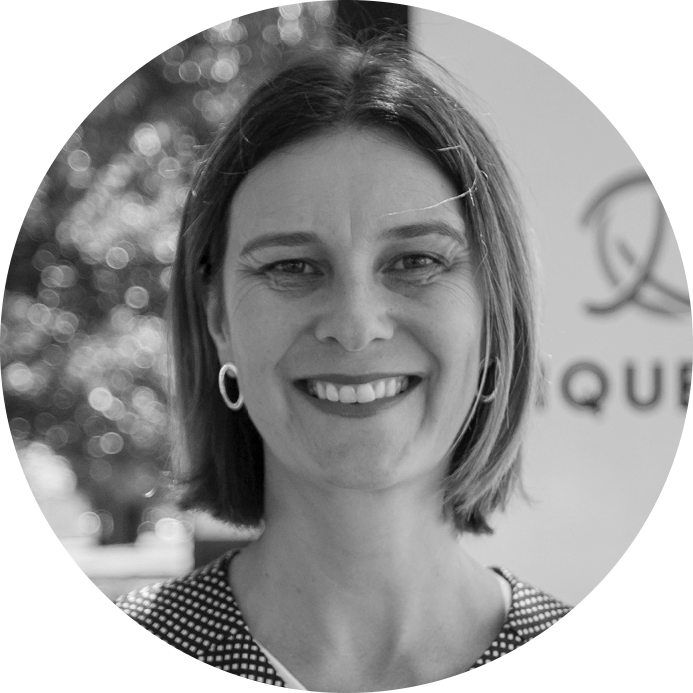A vital element in delivering a great customer experience is your employee experience. If your people feel good about their work, that transfers to all their interactions with customers. So, what exactly is employee experience and why is it important?
Welcome to Bridged IT Services, our new New Zealand channel partner
We’re pleased to welcome Bridged IT Services to help us support Infinity customers even better throughout New Zealand.
The Bridged IT Services team will introduce more retailers and fuel suppliers to Infinity with their end-to-end service that includes Infinity licencing, installation, maintenance and first level support through their 24/7 help desk and agents around the country. They’ll offer a package complete with software, hardware, payments and IT.
“We’ve been working with fuel supply customers for several years now and when I saw Infinity, I was really impressed with its simplicity combined with its level of detail. It’s far ahead of other systems, and as we start to talk to retailers in other industries, we know Infinity will be best for them,” says Gurjit Singh, CEO at Bridged IT. “We’re looking forward to helping retailers unify point of sale, inventory and order management for better customer service and experience.”
Kelly Brown, Triquestra CEO says, “Bridged IT Services is a well-established company with a track record of great customer service and high-availability support. We’re thrilled with this new channel partnership and how it will help us reach new clients and offer even better support to current clients.”
Infinity’s speed and reliability lead to smooth sailing
When Catalina Express – the fastest, most frequent and most comfortable transport option between mainland California and Catalina Island – needed a new point of sale system, they decided Infinity was the only one that could do the job.
This case study shares how Infinity handles POS and inventory across boats, mainland departure terminals and warehouses to help the Catalina Express team serve customers quickly and accurately, even when network connectivity is lost at sea.
Do you have the mindset to inspire true loyalty?
T2 Tea selects Triquestra to unify brand experiences and power global expansion
Premium tea retailer will modernise its retail operations to give customers seamless experiences using our Infinity unified commerce platform
We’re thrilled to announce that Unilever's retail tea business, T2 Tea, has selected Triquestra as its strategic partner for the transformation of its retail system.
T2’s goal is to create immersive and frictionless experiences for customers across online, in-store and mobile channels.
Infinity will be installed as T2’s point of sale with the power to create a central hub for the brand’s inventory and customer loyalty across eCommerce, wholesale and a growing global footprint of over 100 stores across APAC, Europe and North America.
A key factor in T2’s decision was Infinity’s maturity – it’s a proven unified commerce platform that will scale and adapt to shifting consumer expectations and new technologies and give T2 the flexibility to quickly extend support to new stores, channels and markets.
Established in Melbourne in 1996, T2 Tea is a premium tea brand that prides itself on quality products that are beautifully packaged and presented through engaging and immersive in-store experiences. In addition to its global retail outlets, T2 operates a thriving wholesale business selling teas to restaurants, cafes, gourmet food stores and airlines, and has eCommerce channels spanning direct to consumer (t2tea.com), marketplaces and wholesaler third-party sites.
We will support T2 in all areas of retail operations and management, including point of sale, inventory, customer data, order management and loyalty. Infinity will integrate with T2’s other technology solutions, including Oracle NetSuite, Salesforce Commerce Cloud for eCommerce, and HighJump Warehouse Advantage for warehouse management.
Integration of in-store and online channels
“To keep pace with new technologies and changing consumer demands, we decided to bring everything together with a unified commerce strategy,” says Rohan Penman, T2’s Global Head of Technology.
“Following an in-depth software review process, we selected Triquestra as our strategic partner to help achieve that vision. Triquestra already supports retailers with a strategy of omnichannel innovation and provides best-in-class products and processes, a broad unified commerce portfolio and a referenceable track record of success with multi-store retailers across multiple geographies.
“Infinity will give us a single hub for our channels, reducing integration complexity and manual overheads, while increasing efficiency and accuracy,” Rohan adds. “It will also be our platform for growth and innovation, helping us to deliver evolutionary innovations that will accelerate our business agility and competitive advantage.”
Immersive and frictionless customer experiences
Our CEO, Kelly Brown, explains: “T2 shares our vision, with a single-minded focus on creating immersive and personalised experiences for customers. It has mastered the art of creating magical in-store experiences, through storytelling and adventurous in-store displays that encourage visitors to discover and experiment.”
“We’re looking forward to supporting T2 in its next phase of growth as the company harnesses new technologies that help to put innovation at the core of everything they do.”
A springboard for innovation
T2’s transition to Infinity will be a phased approach that starts in Australia and New Zealand and extends to Singapore, North America and Europe. Infinity will provide point of sale and a central hub for inventory and customer data to give customers ‘endless aisle’ access to T2’s entire inventory from any channel or touchpoint, as well as new payment options and fulfilment services such as click-and-collect and ship-from-store.
If you’d like help to unify your brand experiences, get in touch. We’d love to chat about how Infinity can help you create personalised and frictionless experiences for customers across all channels.
Introducing your new support team lead
How to turn the ‘try before you buy’ returns trend into profitable growth
People, partnerships and innovation: Why we introduced agile to Triquestra
Faster time to market, quality customer experiences, engaged employees and disruptive competitive advantages – each of these core business goals can be boosted with agile working.
Kelly Brown - CEO of Triquestra
I spoke with Kelly Brown, Triquestra’s CEO, about the business case for agile and how it helps retailers tackle their most pressing problems to deliver value for their customers and people.
For more on becoming an agile retailer, see our earlier blogs on why retailers should adopt agile and why you need both stability and agility to innovate.
What made you first pursue agile working?
KB: We started agile in 2016 with four business goals: High quality software, fast product delivery, energised and engaged people, and tight client partnerships.
Agile has helped us meet all of these objectives. It has improved the way we innovate to deliver products faster and better, and we adapt more quickly to market demands. Plus our team and clients have been impressed by what we’ve achieved together so quickly.
While many of agile’s benefits are well understood, its impact on both internal and external partner relationships is sometimes less appreciated.
People often talk about building ‘partnerships’ with their customers but aren’t clear on what that actually means. When you think about any relationship, you don't expect it to go well all the time. Things do go wrong and when that happens, the key question you’ll have to ask yourself is: ‘Do we have the same goals and will we collaborate to fix the problem?’
If your customer relationship goes bad every time something goes wrong, then it’s not really a relationship. It’s a transaction.
Agile changes the engagement from transactional to collaborative. It’s a completely different way of working together.
What can retailers do to move from transactional to collaborative partnerships?
KB: For agile to succeed, both parties have to play an active part in building a successful collaboration. This is done by focusing on shared success, continuous learning and iterative processes. Our clients not only achieved this with the Triquestra team, but within their own organisations by bringing their own business and technology teams closer together.
These business stakeholders are now highly involved in every stage of our product development. The work is delivered by self-organising and cross-functional teams selected from across each client’s organisation and the Triquestra team.
And they operate as one team. Everyone jointly sets the goals, agrees what’s in or out of scope, makes decisions as one team and equally shares in project success.
What were some key learnings from your move to agile?
KB: One of our biggest learnings was that although agile is perceived to be totally flexible, it’s not. The process is actually very rigid and disciplined. Once you put agile methodologies in place, your build becomes automated, like a factory.
But scope, priorities and mindset with that methodology – is really flexible. And that’s what generates all the innovation, agility and value.
Mostly it comes down to ‘being’ agile rather than ‘doing’ agile.
And we are constantly working on how to take both our processes and thinking to the next level. Our commitment to continuous learning has seen us recently engage experts at Fr@nk Innovation and Transformation to help us with current best practice and continually evolve our approach.
What else needed to change?
KB: The impact on people is profound and your culture will need to change. While we were fortunate to start with a flat management structure and diverse team, it can be challenging for people to move to small, self-managing teams.
We found that some people find it easy to adapt to agile and some people don’t. It comes down to each individual’s willingness and desire to embrace change.
Agile isn’t for everyone. Some people just don’t like change or prefer to be task driven. We found that the most successful people take the attitude: ‘I'm empowered, I can get this done’ and ask what they need to do to succeed in their role and help others do the same.
Another big learning was how to select and deploy the systems and technologies you need to support agile working. Agile teams need high visibility and regular communication and this can put pressure on traditional time, tracking, financial and management systems.
What are the successes you’ve had with agile?
KB: It’s no coincidence that the winning retail brands we support – such as Z Energy, Cue Clothing and Fonterra’s Farm Source – are the clients using agile with us.
With a deep knowledge of each client’s business needs and very close working relationships, we’re delivering higher quality products with valuable features, faster.
Agile has also transformed our culture. Our people are more engaged, energised and, generally, far happier. Because we’ve adopted agile, our teams are empowered to make the best calls on products and services, they achieve things faster, and their relationships with clients are better.
That has improved our staff retention and talent attraction. In a recent internal survey, almost everyone said that they would recommend working at Triquestra.
Another exciting outcome is that our clients recommend us to others and nominate us for awards. For example, we were thrilled when a panel of industry experts assembled by Inside Retail awarded us runner-up 2019 Supplier of the Year.
What are the benefits retailers can anticipate if they move to agile?
KB: Our clients tell us they enjoy the same benefits we’ve experienced. Their teams are happier and more productive, with better engagement and retention, they have greater connections between their business and IT teams (and the Triquestra team), they spend less time testing and get products to market faster. And their customers are getting innovative new experiences, faster.
One client reduced its regression and UAT testing by 50 percent. That’s a massive saving in time and effort, which has driven down costs and is helping to meet evolving market and business demands.
What are the most common questions you get from retailers considering the move?
KB: All clients want to know if agile is going to cost them more. While upfront costs can increase, our clients’ internal costs dramatically decrease, resulting in overall cost savings. And the improved time to market means that they are unlocking revenue increases or cost savings faster, re-balancing the return on investment equation.
For example, the retailer I just mentioned acknowledged that while agile was going to result in more upfront spending on product development, this would be more than offset by those downstream savings they’ve achieved through reduced testing.
The other common question I get is ‘Am I going to be able to control the outcome?’. It’s an important question because an agile partnership does need a high level of trust. You’re going to move from a top-down hierarchy to a more horizontal, self-managing model. There’s still control – it’s just exercised in a different way, with the focus shifting from the process to the output.
And while agile generates short bursts of tangible outputs and regular outcomes, the end product is not going to be defined and costed upfront like a traditional, waterfall approach.
That's a big shift and one that doesn’t work for all organisations or even all projects. But for those that make the jump, agile will forever change the way they work and deliver fantastic new experiences for their employees and customers.
If you’d like advice on how agile can work within your organisation, get in touch. We’re continually evolving our approach to product development using the agile methodology and we’d love to help you deliver capabilities faster and better to meet your changing market and business demands.
For more on how to give your retail business the flexibility and agility you want, download our ebook.
Your four stages to unifying customer experiences
If it’s time to make a unified commerce approach a top priority to connect, simplify and innovate, this adoption model can help you build an ecosystem of technologies, tools, processes and experts.
1
Get tight control of your inventory
2
Extend your brand experience across all channels
3
Create delightful, personalised shopping experiences
4
Innovate, innovate, innovate
Stage 1
Get tight control of your inventory
Ensure you can accurately manage your inventory levels across all your locations and customer touchpoints by centralising your inventory information in near real time. This step is as much about business process, training, discipline and compliance, as it is about the software you install.
With a unified inventory management system in place, you can guarantee you’ve got the right inventory available in each location, without carrying the cost of overstocking. You can also react to trends quickly, and forecast demand based on historical data, sales forecasts and seasonal variations.
See how Night ‘n Day started with inventory to create great customer experiences and increase net profit by around $12,000 a year for each store.
Stage 2
Extend your brand experience across all channels
Once you’ve got control over your inventory, you’re free to increase your purchasing channels with certainty.
Exposing, rather than replicating, inventory and customer data from your platform to each and every channel means everything stays in sync. Your staff and customers will have consistent product visibility and can expect fluid and accurate interactions, whether in-store, on mobile or online.
And with real-time data on stock levels, you’ll be able to see where inventory is located, find the lowest cost or fastest fulfilment route, and provide better promotions.
Here’s how Cue Clothing is using unified commerce to combine physical and digital channels into a ‘one-brand’ experience.
Stage 3
Create delightful, personalised shopping experiences
Now it’s time to build genuinely meaningful customer experiences. You need to mix emotional and rational factors to connect and build relationships.
Rational value is the starting point for a great customer experience. It meets each customer’s very logical need for price and product so that they feel they are ‘getting’ value. It’s also the functional experiences you offer, such as convenience, fulfilment, flexibility and speed.
To make customers ‘feel’ valued, you want to tap into aspirational motivations and fulfil their deep, often unspoken needs. Personalised communications, recommendations and offers, rewards for spend and tailored in-store experiences fall into this category and are a great way to surprise and delight – especially if the experience is unexpected.
Stage 4
Innovate, innovate, innovate
By using APIs to expose data and functions, and easily plug in and deploy new services, channels and devices, you’ll reduce integration and maintenance overheads, increase real-time accuracy and enjoy virtually limitless scalability and agility.
These improvements in IT efficiency and availability let you shift your team’s priorities to innovation. By using agile methodologies and creating a community of third-party apps and systems working together in an ecosystem, you can drive critical strategic initiatives and continually innovate.
The end result is the ability to create extraordinary customer experiences that help to capture market opportunities, generate additional revenue and build brand advocacy.
See how APIs can help you innovate at pace and build powerful ecosystems to give customers extraordinary experiences.
Contact us if you have questions or would like advice on any of these unified commerce stages. We can examine your pain points and make recommendations to help you solve problems and find new opportunities that deliver frictionless customer experiences and differentiate your brand.
For more on unified commerce and why it’s the future of retail, download our ebook.
Challenge gets up and running with Infinity in a few short weeks
A group of Challenge service stations is now using Infinity unified commerce platform, after a fast rollout.
Nine Challenge service stations located around the country and owned by nine individual businesses gave us a big challenge: Understand our requirements and get Infinity up and running in 6 weeks. We had this deadline because the existing system was reaching its end of life. Add in the Christmas holiday break and we had even less time to scope the project, configure Infinity, test and deploy to the sites.
A high feature fit + centralised data + great support = success
Infinity has a configuration and built-in features specifically for fuel and convenience stores so there was no change required to get Infinity up and running. Infinity is intuitive and fast for staff to learn and it processes sales very quickly so customers can be in and out with no fuss.
In addition to point of sale, Challenge is using Infinity to unify inventory and pricing and promotions data. This visibility lets owners see which items are selling so they can stock more accurately and confidently offer relevant promotions. Behind the scenes, Infinity integrates with Xero and Reckon to automate general ledger transactions.
Our partner, ECL Group, managed the rollout and provide ongoing support backed by Triquestra’s 24/7 support.
Sandra Frazer of Challenge Darfield sums up the deployment best:
“We have recently installed Infinity on our site and we just love it. It is so simple to use and all of our staff took to it like ducks to water. Our install was the week before Christmas and staff were literally thrown in the deep end, as the first time they saw Infinity was when we went live. ECL Group’s training was very clear and easy to follow. The thing I love most about Infinity is that it is very quick to process a sale which is so important in a busy site like ours.”



































